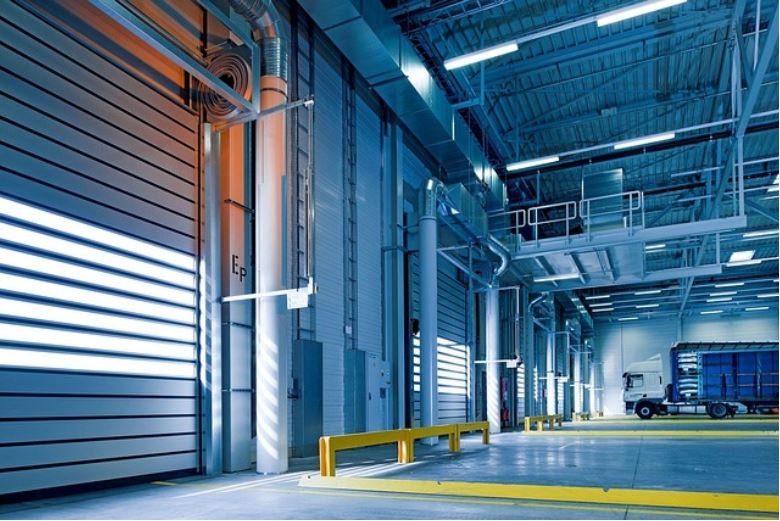
Mexico has emerged as a key player in the global industrial real estate landscape. Its strategic location, trade agreements, and increasing demand for nearshoring make it an attractive destination for companies seeking to establish or expand their operations. This growth has led to significant developments in leasing, construction, and infrastructure investments, reshaping how businesses view industrial property in the country.
As demand continues to rise, understanding the dynamics of industrial lease in Mexico, the role of industrial parks, and the broader trends influencing this sector has become essential for investors, developers, and corporations alike. From competitive costs to connectivity advantages, Mexico offers a compelling value proposition.
The rise of industrial lease in Mexico
The concept of leasing industrial properties in Mexico has gained momentum in recent years, largely driven by shifts in global supply chains and a renewed interest in nearshoring.
Unlike traditional ownership models, industrial lease in Mexico provides flexibility for businesses to scale operations without the burden of large upfront capital expenditures. This arrangement is particularly appealing to international companies seeking to enter or expand within the North American market while minimizing risk.
Several factors fuel the demand for leasing over ownership:
- Rapid market entry: Leasing enables faster occupancy compared to building from scratch.
- Cost predictability: Long-term lease agreements often include structured terms that shield tenants from unexpected market fluctuations.
- Operational flexibility: Tenants can relocate, resize, or renew leases based on evolving operational needs.
Moreover, industrial leasing has become increasingly standardized in Mexico, with many developers offering Class A buildings featuring high ceilings, modern infrastructure, and compliance with international safety and environmental norms.
Strategic value of industrial parks in Mexico
Modern industrial development in Mexico is concentrated in specialized zones known as industrial parks. These parks are designed to provide fully integrated environments where logistics, manufacturing, and warehousing activities can thrive.
One of the key advantages of operating within industrial parks in Mexico is access to shared infrastructure such as power, water, and telecommunications, all tailored to industrial standards. Many of these parks also feature:
- 24/7 security and controlled access
- Customs facilitation zones or proximity to bonded warehouses
- On-site amenities like maintenance teams and office spaces
In addition to physical infrastructure, industrial parks often offer administrative support services, streamlining regulatory compliance and helping new tenants navigate Mexican business laws. This level of support is particularly attractive for foreign investors unfamiliar with the local landscape.
These parks are strategically located near highways, ports, and borders—especially along the U.S.-Mexico border—making them ideal for export-driven industries such as automotive, electronics, and aerospace.
Demand surge for industrial real estate in Mexico
Over the last decade, the country’s industrial real estate market has experienced robust growth. Factors such as the U.S.-Mexico-Canada Agreement (USMCA), rising labor costs in Asia, and global supply chain disruptions have prompted companies to reevaluate their manufacturing footprints.
As a result, the appetite for industrial real estate in Mexico is stronger than ever. Cities like Tijuana, Monterrey, Guadalajara, and Querétaro have become industrial hotspots, drawing multinational corporations and logistics providers.
Some notable drivers include:
- Nearshoring trends: Companies relocating production closer to North American markets.
- E-commerce boom: Growing demand for warehousing and distribution centers.
- Automotive sector expansion: Especially for electric vehicle manufacturing and parts suppliers.
This surge has also increased competition for premium industrial space, driving up rents in key markets. However, compared to North American standards, lease rates in Mexico remain relatively competitive, offering excellent value for modern facilities.
Regional hubs for industrial growth
Mexico’s geography plays a pivotal role in the industrial sector’s expansion. While the northern border cities cater primarily to U.S.-bound trade, the central and Bajío regions serve as hubs for domestic distribution and high-value manufacturing.
Here is a breakdown of key regions and their specializations:
- Northern Mexico (Tijuana, Ciudad Juárez, Monterrey)
Strong focus on maquiladora operations, cross-border logistics, and U.S. export hubs. - Bajío Region (Querétaro, León, San Luis Potosí)
Known for its advanced manufacturing clusters, especially in automotive and aerospace sectors. - Western Mexico (Guadalajara)
A hub for electronics manufacturing, IT infrastructure, and data centers. - Central Mexico (Mexico City, Toluca)
Strategic for national logistics and access to a dense population base.
Each of these zones benefits from well-connected transportation networks, skilled labor availability, and tailored government incentives, making them highly desirable for industrial investment.
Leasing considerations for international tenants
For companies exploring opportunities in the Mexican industrial market, understanding local leasing practices is crucial. While lease structures may resemble those in the United States, there are important distinctions:
- Lease terms typically range from 3 to 10 years, with options for renewal.
- Triple-net leases are common, where the tenant covers taxes, insurance, and maintenance.
- Currency: Leases may be denominated in U.S. dollars to minimize exchange rate risks for foreign tenants.
- Build-to-suit options allow customization for specific operational needs.
Working with experienced brokers or developers with a strong regional presence can streamline the process, from site selection to negotiation and regulatory approval.
Outlook and investment potential
Mexico’s industrial real estate sector is poised for continued growth. With global trade undergoing transformation, the country’s role as a nearshoring destination will likely solidify, attracting further investment into industrial assets and infrastructure.
Institutional investors are increasingly entering the market, signaling confidence in long-term demand. At the same time, local developers are innovating with sustainable building practices and smart infrastructure to meet evolving tenant expectations.
Given the momentum, stakeholders seeking entry into this space should act proactively, especially in high-demand corridors where industrial leases in Mexico properties are quickly absorbed.
